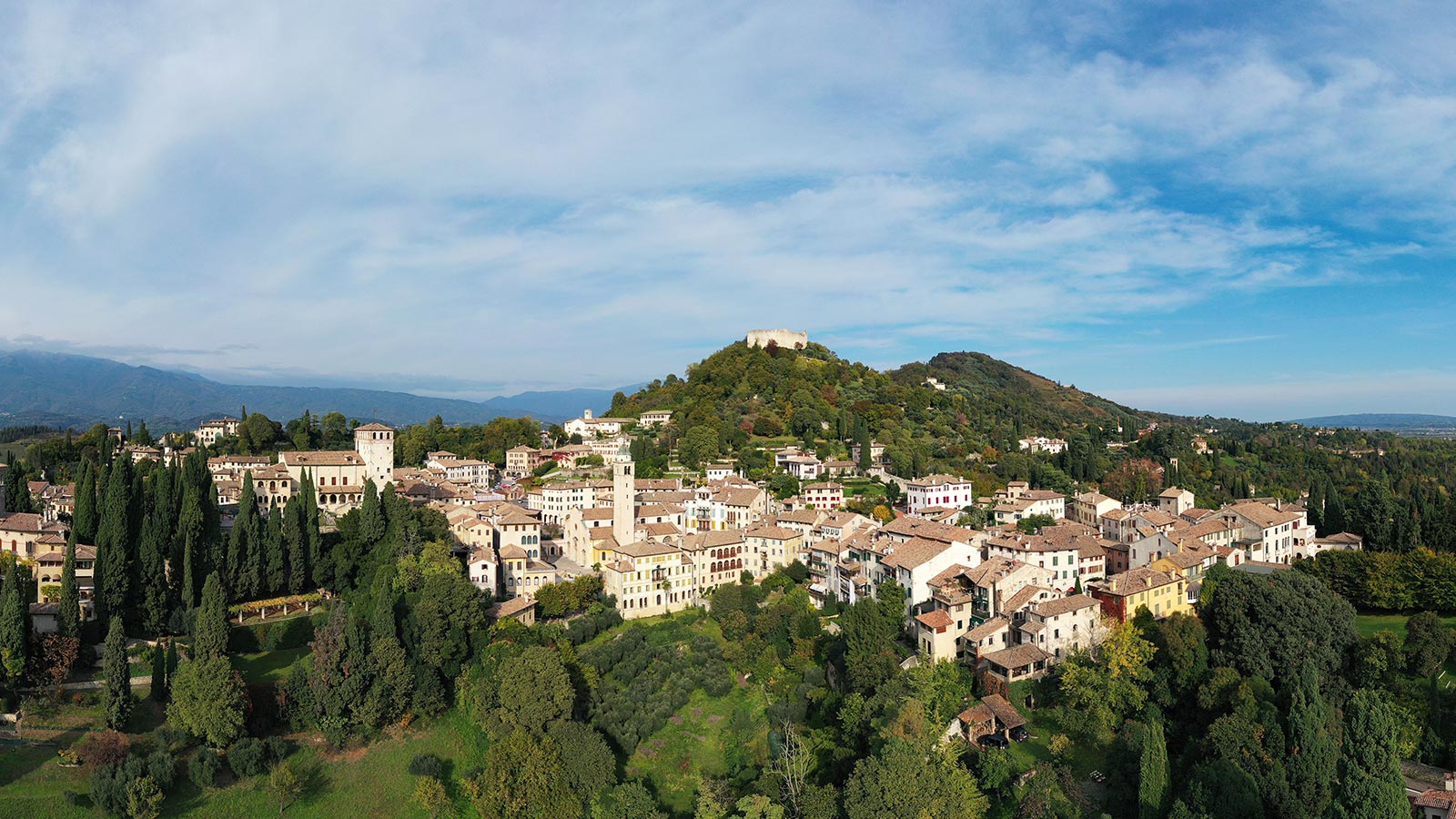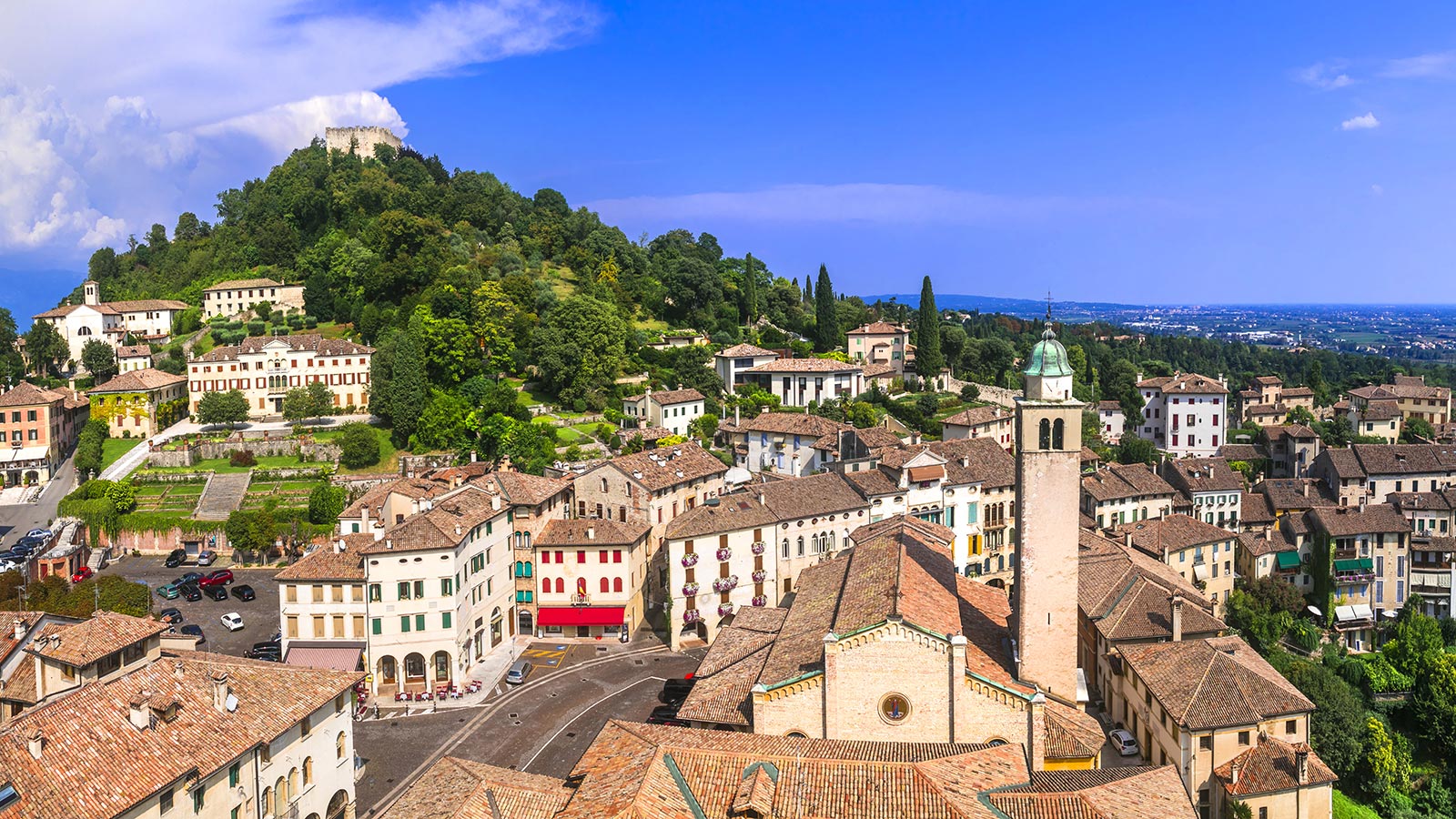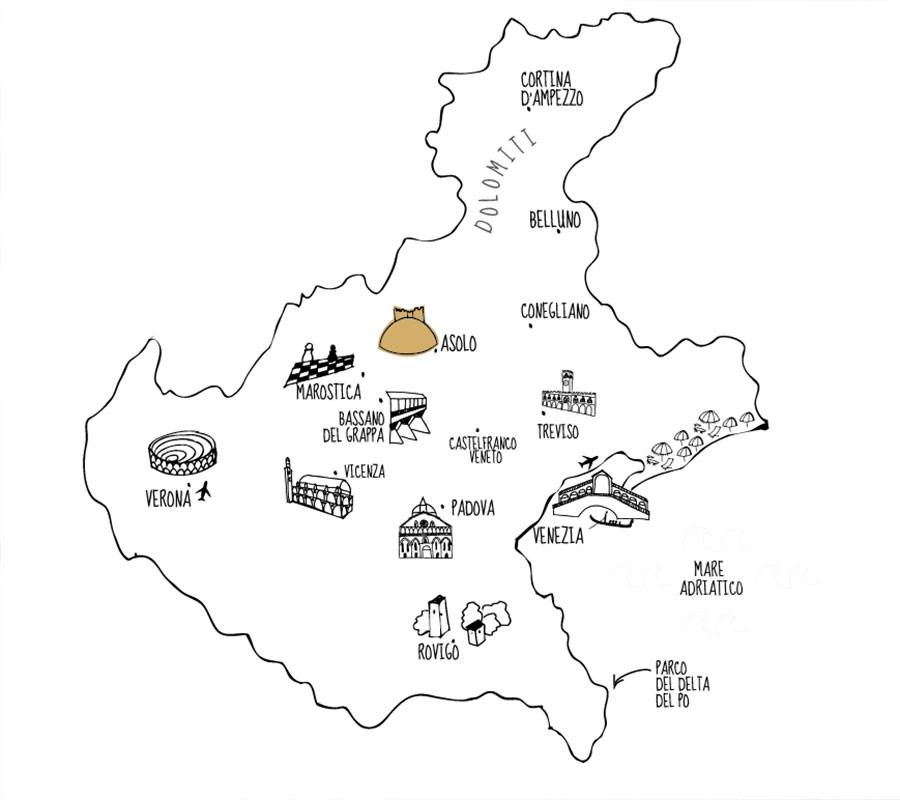Asolo
“Between the Piave and the Brenta, there are several rows of the most beautiful pyramid-shaped hills in Italy. The houses of Asolo spread out on the last row, topped by a tall square fortress.”
Giovanni Comisso, Veneto felice
Asolo was mentioned for the first time, under the name Acelum, in 77 CE by Pliny the Elder in his Naturalis Historia. This suggests that at the time Acelum was one of the largest colonies in the tenth Augustan region, Venetia et Histria: a prestigious position along the Via Aurelia controlling the valley of the Muson River.
Since the middle of the 6th century CE, Asolo has been a Bishop’s.
In the 11th and 12th centuries, the Praetorian Palace (later Queen Cornaro's Castle) was the centre of economic and administrative life. On the top of Monte Ricco, there is a fortified village (castrum) and later, at the end of the 12th century, a new structure was built: The Fortress.
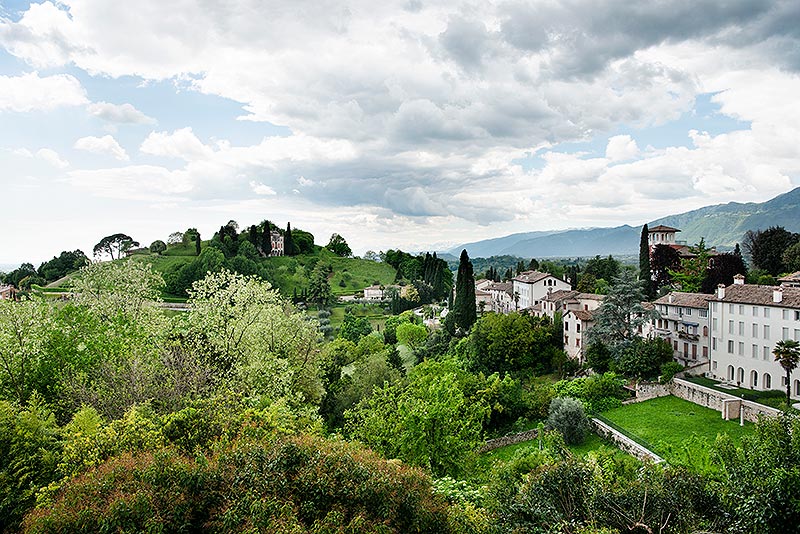
In 1337 Asolo was handed over to Venice and became the chief magistrate’s office, with the task of administering the territory between the Brenta, the Piave, the Massicio del Grappa, and the plain as far as Castelfranco. This was the period of maximum splendour for Asolo. First of all, Venice used tax relief to promote populating the area. Then there was Caterina Cornaro, former queen of Cyprus, who lived in the castle since 1489 with a rich court of artists and poets. It was here that Pietro Bembo set Gli Asolani, a dialogue dedicated to Lucrezia Borgia, whom he loved at the time (1505).
In the 1600s, Asolo suffered a serious decline due to the earthquake in 1695. It recovered and in 1742 officially became a city.
In 1750, the Accademia dei Rinnovati was founded, which stimulated the city’s literary environment.
Starting in the mid-1800s, Asolo became an almost essential stop for foreigners on their way to Venice.
Asolo was, and still is, a place that is particularly appreciated and dear to artists and people of culture and was a holiday resort for travellers and intellectuals in the nineteenth and most of the twentieth century: Robert Browning, Eleonora Duse, Gian Francesco Malipiero, and Freya Stark.
Giosuè Carducci called it “the City with a hundred horizons.”
In 2002, Asolo became one of the Most Beautiful Villages in Italy.
![]()
![]()
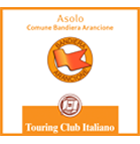
![]()
